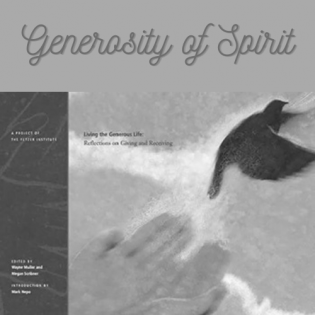Tales of Wisdom and Discernment
Through four folktales from different parts of the world and wisdom traditions, learners explore how to make decisions in difficult situations. They define discernment and wisdom and give examples of each in real-life situations.
The learner will:
- identify the historical and geographic settings of folktales.
- identify the message and connections to philanthropy.
- suggest decision-making strategies for difficult situations.
Youth access to these folktales (Learning to Give has permission to make these folktales available online to readers):
- The Magic Pomegranate
- The Old Alchemist
- The Story of the Two Old Women
- The Wise Quail
Talk with family members about effective decision-making strategies and examples.
- "The Magic Pomegranate." Schram, Peninnah. Jewish Stories One Generation Tells Another. Northvale, NJ: Jason Aronson, Inc., ©1987. p. 180-181. Used with the permission of Jason Aronson, Inc. "Jewish Stories One Generation Tells Another, retold by Peninnah Schram, published by Jason Aronson, appears by permission of the author and publisher"
- "The Old Alchemist." Chinen, Allan B. In the Ever After: Fairy Tales and the Second Half of Life. Wilmette, Illinois, ©1992. pp. 31-33. Used with the permission of Chiron Publications: "Chiron Publications grants permission to use ‘The Old Alchemist,’ a selection from In the Ever After: Fairy Tales and the Second Half of Life by Allan B. Chinen."
- "The Story of the Two Old Women." Choudhury, Roy and Pranab Chandra. Folk Tales of Bangladesh. New Delhi: Sterling, ©1976. pp. 55-56. Used with the permission of Sterling Publishers Pvt. Ltd. "License to publish THE STORY OF THE TWO OLD WOMEN from FOLK TALES OF BANGLADESH by Roy Choudhury is given by Sterling Publishers Pvt. Ltd., New Delhi."
- "The Wise Quail." Martin, Rafe. The Hungry Tigress: Buddhist Legends and Jataka Tales. Berkeley, California: Parallax Press, ©1990 .Used with the permission of Parallax Press. "Reprinted from The Hungry Tigress (1990) by Rafe Martin with permission of Parallax Press, Berkeley, California."
Instructions
Anticipatory Set:
Define "wisdom" and "discernment" and distinguish the subtle differences between the two terms. Discuss examples of each.
The first story comes from Burma, now known as Myanmar. On a map, locate its absolute location (longitude and latitude) and relative location (general descriptors of where the place is located). Describe Burma through physical characteristics and human characteristics.
Read "The Old Alchemist" together and discuss the message and connection to philanthropy.
- The father had to be wise enough to make sure his daughter was well while encouraging his son-in-law to take on responsibility for supporting the family. Identify the various times throughout the story that the old man was wise in his words and actions.
- Folktales often have themes that deal with opposites. Was this story primarily about "wise vs. foolish" or "age vs. youth" or "wisdom vs. discernment"? Why do you think so?
"The Story of the Two Old Women" is a folktale from Bangladesh. The Tetan Buri (clever old woman) and the Boka Buri (the foolish old woman) have an arrangement that only benefits one of them. Read the folktale together and discuss the message and connection to philanthropy.
- How does their arrangement get changed?
- Explain why this is a tale of discernment. Are there other strategies that could have been used to solve the Boka Buri’s problems?
The Jewish tale "The Magic Pomegranate" is a short but detailed tale about making the right decision when all choices seemingly are correct but only one can be selected. Read the folktale together and discuss the message and connection to philanthropy.
- Imagine and discuss an alternative ending in which the princess selects a different brother without violating the father’s wishes.
- In life it is often difficult to know which course of action to take. Brainstorm advice to aid others to know what to do when it is not clear which way to go?
In many Buddhist tales the Buddha takes the form of a wise animal. In the next story, "The Wise Quail," the Buddha appears in the form of a quail. Not only is it a story of wisdom, it also talks about cooperation versus ego. Read the folktale together and discuss the message and connection to philanthropy.
- In real life, what is an example of when "satisfying one’s ego" can wreak havoc?
- Scan the story for wisdom in the form of a lesson, such as this phrase: "You yourself, Wise Quail, have taught us all we need to know in order to be free."
- Recall a time when you were "in trouble" and had to chose a path out of the difficulty. What wisdom can you share?
As a service, learners may create posters that teach decision-making skill for those facing difficult situations. These will be posted in commons areas so that they may impart "wisdom" to those who view them.
Philanthropy Framework
-
Strand PHIL.II Philanthropy and Civil Society
-
Standard PCS 02. Diverse Cultures
-
Benchmark HS.1 Analyze philanthropic traditions of diverse cultural groups and their contributions to civil society.
-
-
